Further accelerating time to insight with Fusion Analytics
The journey so far…Our blog series began with: “Starting your Fusion Analytics Journey” which can be found here. In the second blog post, we discussed the various ways to move to delivering deeper and richer insights by bringing in non-Fusion data and combining with Fusion data which can be found here. In the third, we discussed the various ways in which we can further leverage the power of Fusion Analytics which can be found here.
Up next…we will briefly consider four other situations that our customers look to address on their analytics journey, not necessarily independent to those explored in previous blogs.
The Data Augmentation Connectors
If you are currently using Fusion Analytics, you will be aware that you have a powerful pre-built Data Pipeline that delivers curated and derived data from Fusion and lands it in Fusion Analytics’ ADW for exploitation by Fusion Analytics’ Oracle Analytics Cloud (OAC).
If you have moved from e-Business Suite, we have developed a Data Augmentation Connector to bring in that data (which is currently in Preview, Winter 2022). In addition, we are developing other Data Augmentation Connectors, including potentially ones for Oracle EPM, Salesforce, Shopify and Google Analytics, Figure 20.
Though, as described in the earlier blogs, you could use your own ETL tool (or ODI) to do exactly this, we have pre-built the Data Augmentation Connectors to help accelerate the whole process.
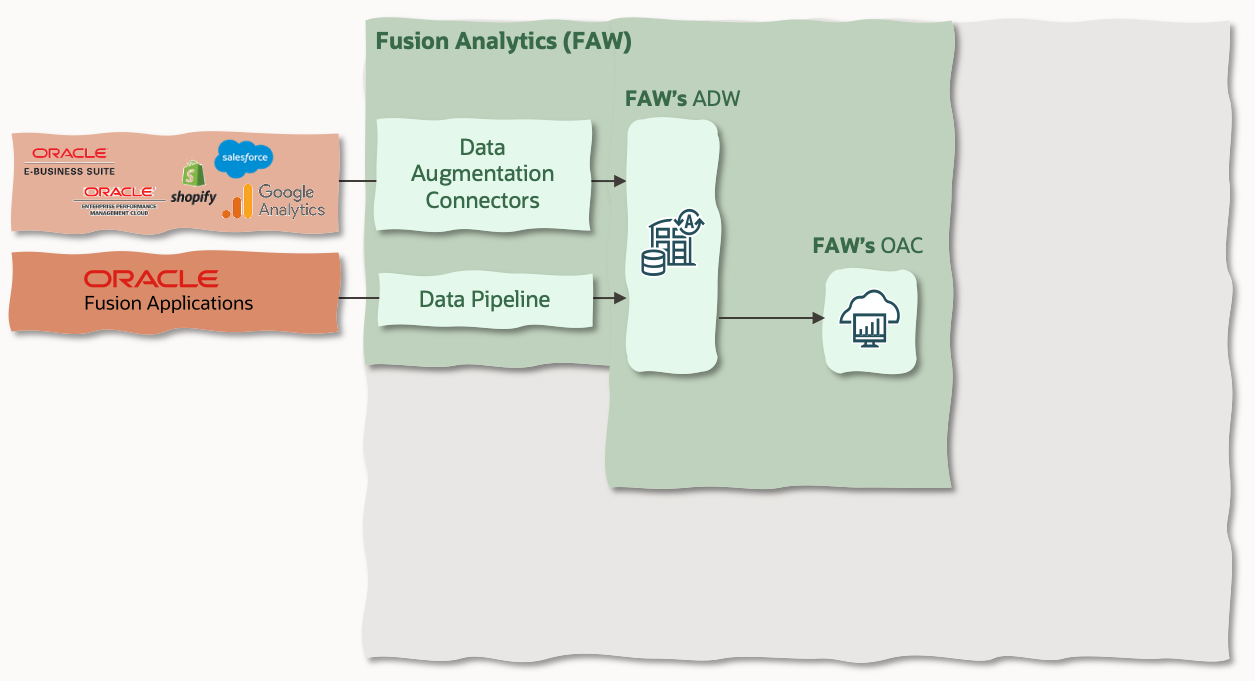
Real time or not real time analytics
A subject that requires careful consideration is whether your data should be delivered into your data store in real time and thus your analytics reflect exactly what has happened in the application at any point in time. At first glance, one might think “of course I want real time!”. However, in many circumstances, when you are undertaking detailed analysis of a situation, you do not want your underlying data to be constantly changing. Running complex reporting queries against transactional systems can also cause you performance issues. Many blogs have been written on the pros and cons, it is key to understand your requirements and, in most cases, not real time (i.e., a daily or weekly) updates of your data may be more appropriate.
We started this blog series talking about Oracle Transactional Business Intelligence (OTBI). OTBI is embedded in Fusion and provides you with a way to look at what’s happening in real time. Though Fusion Analytics does not directly deliver real time reports across the board, there are possibilities to consider.
- Firstly, frequent data refresh of data in Fusion Analytics can be found described in this blog here.
- Secondly, as previously mentioned, you also have the ability in Fusion Analytics’ OAC to do a live data connect and connect back to Fusion and thus in this way present real-time data onto a dashboard, Figure 21.
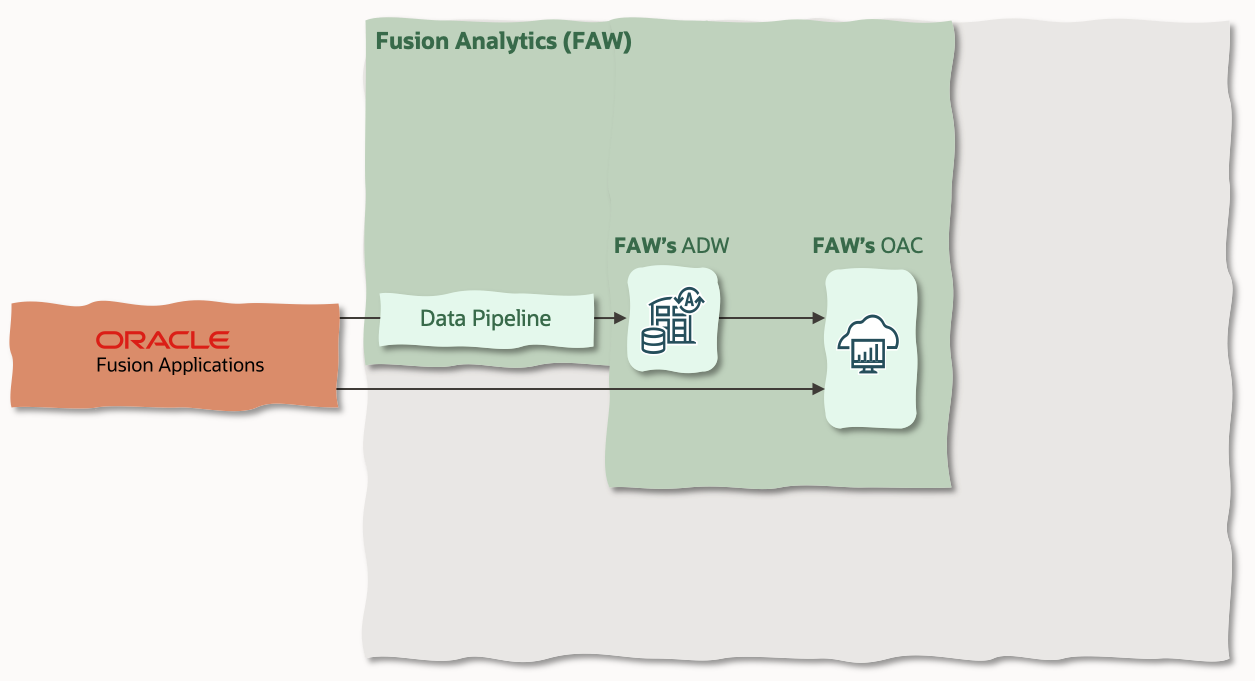
Bringing in existing Oracle Analytic Investments
Some Oracle customers may have gone through the process of upgrading Oracle Business Intelligence (OBIEE) to Oracle Analytics Server (OAS) to take advantage of all the free additional capabilities of this modern on-premises analytics platform, they may then have made the transition to OAC. Other customers may have started building out analytical solutions using OAC, with or without ADW, Figure 22.
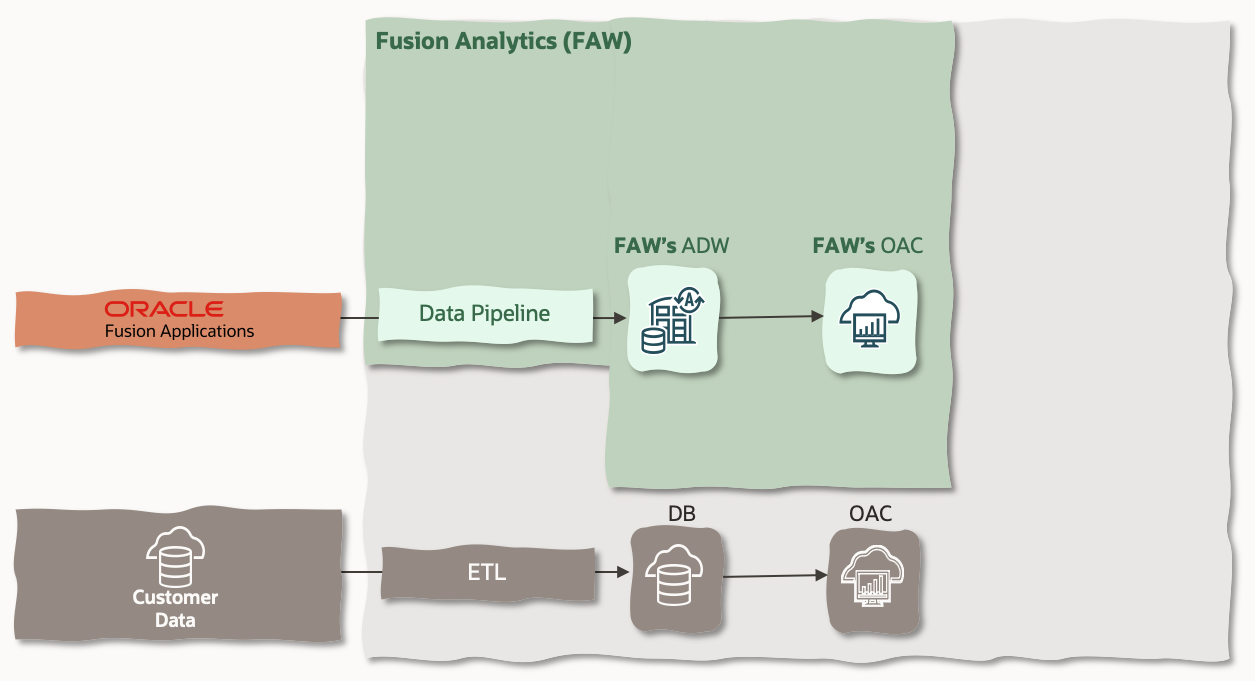
It is possible to merge your existing work into Fusion Analytics and thus retain your investment, Figure 23.
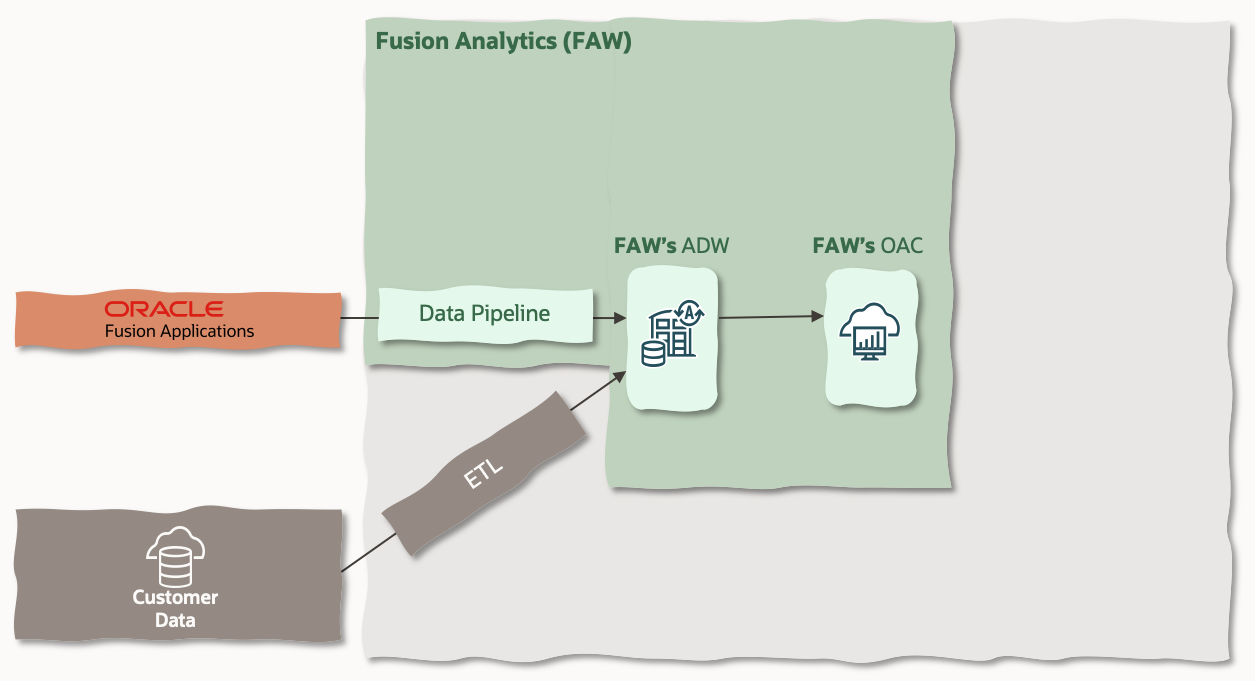
Other BI & Analytics Front End Tools
In my first part of the blog series, I described; how FAW is built on top of Oracle Analytics Cloud (OAC) and Autonomous Data Warehouse (ADW) – a powerful combination that provides a flexible platform which helps you address any additional analytical needs, Figure 24; and more specifically how curated & derived data from Fusion resides in database tables within ADW, the Data Visualizations capabilities of OAC then access this data via the semantic model, which provides a true business orientated view of that data that a Business Analyst can consume.
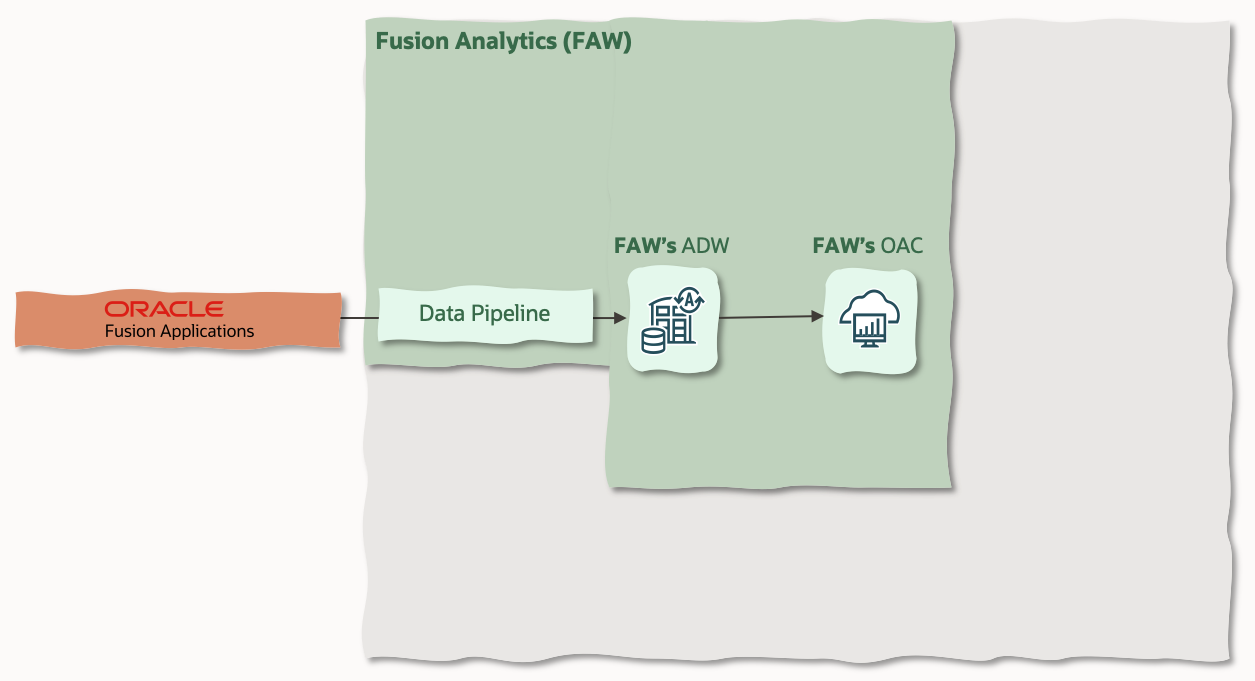
It is indeed possible for any BI / Analytics tool, with the necessary capability, to connect to the ADW, Figure 25. Thus, it is possible for you to provide Business Users who have a strong preference for a particular tool the capability to take advantage of the curated and derived data in ADW. However, it is worth noting that, they will not have access to the valuable pre-built semantic model. Figure 25 also shows one community of users using OAC and another using a separate Analytics Tool.
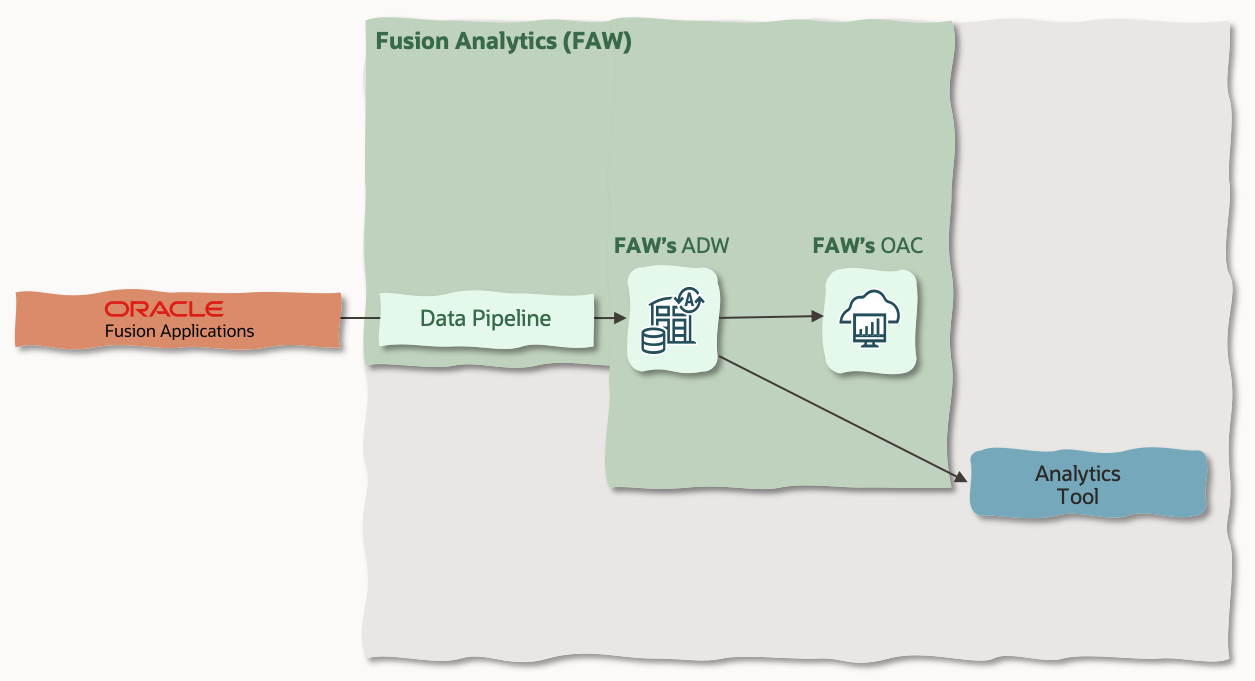
Power BI is the exception to this rule as we worked to enable it to connect directly to the OAC semantic layer (Figure 26) thus, taking full advantage of the power of Fusion Analytics. In this scenario, you can have one community of users building out visualisations in Power BI and another taking advantage of the pre-build KPIs and Visualisations within OAC.
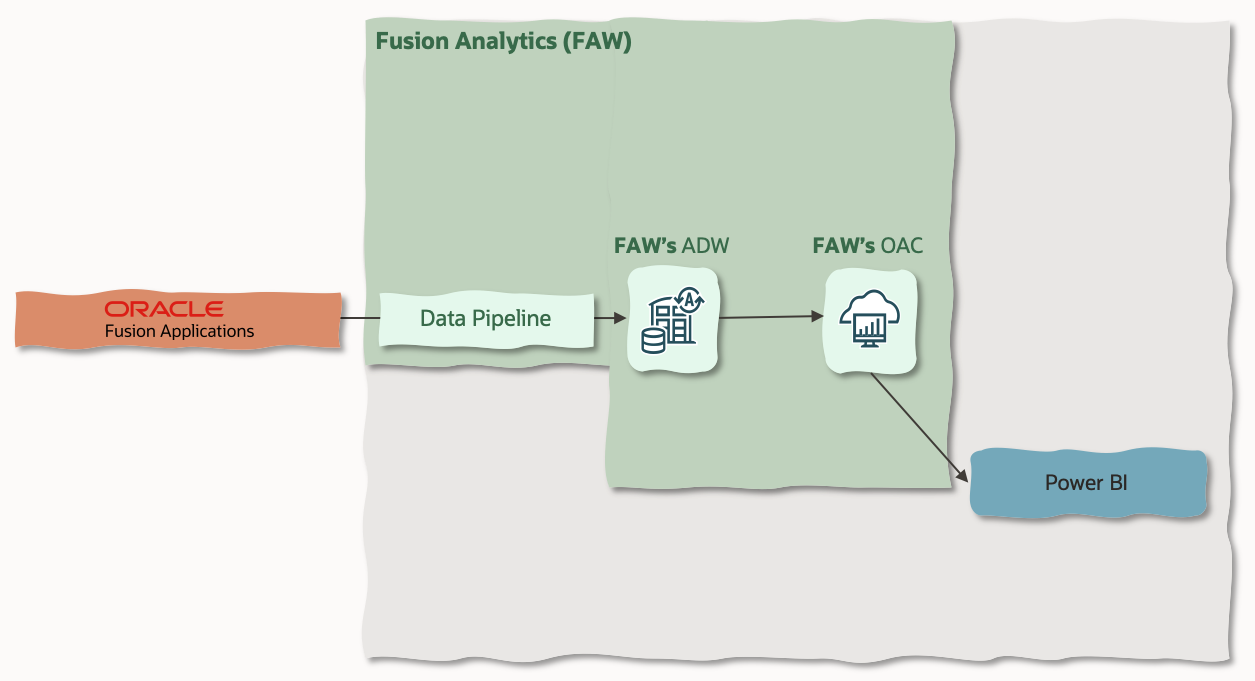
Let’s end here…
We have covered three simple but powerful scenarios in this blog and many across the blogs in this series.
To illustrate this journey and some of these scenarios, earlier I used the HR attrition use case. However, there are multiple use cases where machine learning can enhance the ability for effective decision making. Interestingly, we are not just adding more business content in the form of metrics and analyses around new key areas to Fusion Analytics, we are looking to add predictive models as pre-built content to help you accelerate your time to action.
We hope you have enjoyed this blog series; the possibilities are endless, and your journey can now begin…

